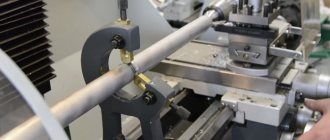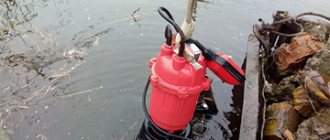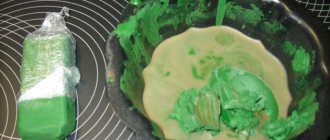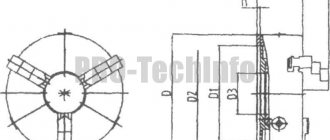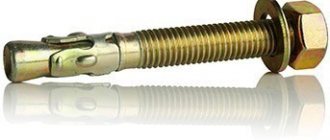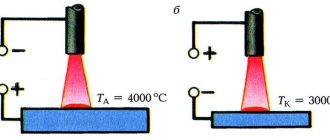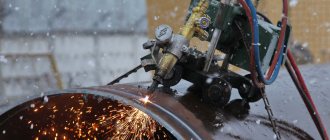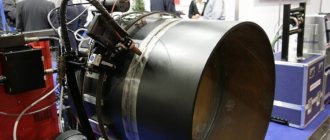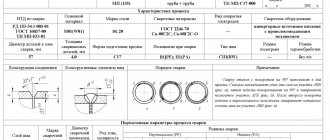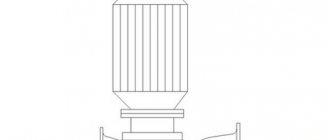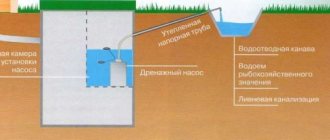Lathe chucks. Varieties, features of selection and operation
Lathe chucks - also called clamping devices, are intended for installation on the front end of the spindle of lathes. The design of the lathe chuck provides high clamping force on the workpiece, ensures centering accuracy and perpendicularity of the surfaces of the processing axis.
Domestic and foreign manufacturers make chucks for lathes from durable cast iron or based on a hardened steel body; they include a set of hardened jaws.
- Content
- Enterprises producing lathe chucks
- State standards regulating the design and dimensions of lathe chucks
- Types and classification of lathe chucks
- Self-centering three-jaw chucks GOST 2675-80
- Lathe chuck designation system
- Marking of lathe chucks produced by BelTAPAZ
- Marking of Polish lathe chucks Bison-Bial type “ST”
- Spiral cartridges
- Intermediate (transition) flanges for lathe chucks
Enterprises producing lathe chucks
- Grodno Lathe Chuck Plant - Currently - BelTAPAZ produces lathe chucks and is the largest manufacturer in the CIS;
- Baranovichi machine tool accessories plant BZSP - The plant produces manual steel lathe chucks, steel lathe chucks with mechanized clamping, 2-, 3-, 4-jaw;
- Inrost, LLC Ekaterinburg - The company produces manual 3-jaw lathe chucks;
- The Pskov technological equipment plant produces self-centering lathe chucks with manual drive;
- Orsha Tool Plant OIZ - The plant produces three-jaw drill chucks, thread-cutting chucks and machine tooling;
- Novosibirsk Tool Plant - The plant produces three-jaw drill chucks.
Enterprises producing lathe chucks in the USSR
- Pskov Machine-Building Plant Pskovmash - manufactured self-centering lathe chucks with manual drive;
- Paveletsky plant of machine components PZSU - The plant ceased to exist. The plant was the only manufacturer in Russia of 4-jaw lathe chucks with independent movement of the jaws;
- Borisoglebsk Lathe Chuck Plant - Production of lathe chucks has been discontinued. The plant produced three-jaw self-centering and four-jaw chucks with independent movement of the jaws.
- Lugansk Machine Tool Plant - Currently - Lugansk Cartridge Plant - the plant does not produce lathe chucks. Produced lathe chucks with a diameter of 125 mm (7100-0003), 250 mm (7100-0009) with a faceplate fit
- Frunzensky Machine-Building Plant named after. Lenin - Currently - Bishkek Machine-Building Plant . The most famous products: lathe chucks with a diameter of 160 mm (7100-0005), 250 mm (7100-0009)
Foreign suppliers of lathe chucks to Russia
- BISON-BIAL Poland - Official representative of the plant in Russia - Skalt LLC St. Petersburg
- Jet, China - Lathe chucks for Jet machines
- Proma, China – Lathe chucks for Proma machines
State standards regulating the design and dimensions of lathe chucks
- GOST 1654 - General purpose lathe chucks. General technical conditions
- GOST 2571 - Drive lathe chucks. (for spindles according to GOST 12593-72 and GOST 12595-85)
- GOST 2675 — Self-centering three-jaw lathe chucks. Main Dimensions
- GOST 14903 — Self-centering two-jaw lathe chucks
- GOST 24351 — Self-centering lathe chucks 3- and 2-jaw wedge and lever-wedge
- GOST 24568 - Magnetic cartridges. Specifications
- GOST 3890 - Four-jaw chucks with independent movement of the jaws
- GOST 16157 — Membrane chucks for grinding holes in gears
State standards regulate the operational and technical parameters according to which lathe chucks for machine tools are selected:
- A number of possible outer diameters of chucks and, accordingly, a range of workpiece sizes: maximum and minimum diameter (outer and inner), depending on the method of fastening - on direct or reverse cams. The maximum permissible weight of the workpiece is taken into account;
- Method of attaching the chuck to the spindle. Connecting dimensions: diameter of the centering belt or centering cone;
- Location and dimensions of mounting holes in the lathe chuck;
- Limits of turning speed of the lathe chuck;
- The diameter of the hole in the chuck body for installing a rod or pipe;
- Lathe chuck accuracy
Installation procedure
Before installing it, you should carefully check the condition of the surfaces of the spindle and chuck. Surfaces should not have nicks, scratches, burrs or contaminated areas.
Identified defects are eliminated point by point with a file or scraper. You should check the runout of the end and cone of the spindle landing base, which should not exceed three microns.
Place a metal rod or pipe with a diameter of about 20 mm into it. clasp it with your fists. With a partner, grasp the rod on both sides, or using lifting mechanisms, through the mounting loop, move the cartridge onto the mounting stand fixed to the machine support.
Install the guide in the tailstock. The chuck should be shifted by rolling towards the spindle axis.
Using a longitudinal feed, move it to the spindle flange so that the chuck studs do not reach the mounting holes of about 10 mm. The machine should be set to neutral speed to allow the spindle to rotate freely.
Move the tailstock with the quill completely retracted forward towards the chuck so that the guide extends over the entire width of the cam prisms and fix the tailstock.
Clamp the jaws of the chuck to transfer the weight to the guide. Align the key on the spindle flange with the mounting hole. Set the rotary washer to the position of the open holes. Using the quill, push the cartridge forward until it stops.
After making sure that all the stud nuts are out of the back of the spindle flange, turn the rotary washer to the locked position. Tighten the top nut with enough force to transfer the weight of the chuck onto the spindle. Open the cams and move the tailstock back. Compress the nuts according to the rule crosswise, evenly distributing the force between the studs.
After installation is completed, the chuck should be checked for axial and axial runout. If the standards are exceeded, it should be removed and all mating parts of this assembly should be carefully inspected.
Video: installation of a lightweight cartridge on a threaded fastener.
Types and classification of lathe chucks
Number of jaws in the chuck and their design
Lathe chucks are distinguished by the number of jaws: 2; 3; 4; 6
- 2-jaw self-centering chuck - used for clamping small asymmetrical workpieces (rebar, cast parts, forgings). Cartridges of this type have a fairly simple structure. Both manual and mechanized (pneumatic) chucks are used;
- 3-jaw self-centering chuck - usually used for fastening round and hexagonal workpieces, it is most widespread. The reason for its high popularity is the speed of centering and clamping of parts, which is especially important in small-scale production, where workpieces are changed very often;
- 4-jaw chuck with independent installation of jaws - used for fastening rectangular and asymmetrical parts, as well as square bars. The chuck has cams that move independently of each other, which provides it with wide capabilities;
- 6-jaw self-centering chuck - allows you to process thin-walled parts without deforming them. The gripping forces in a six-jaw lathe chuck are distributed evenly across the 6 jaws.
Cams are divided into direct and reverse:
- Straight jaws - clamp the part from above, along the outer surface;
- Reverse cams - clamp the part from the inside, the part must have a corresponding hole, be hollow, for example a pipe;
Chuck jaws of all types are manufactured in the following designs (GOST-2675-80):
- Solid cams - made from a single piece of steel with a tensile strength σB of at least 500 MPa and heat treatment of the clamping and rubbing working surfaces to a hardness of at least 43 HRCE;
- Prefabricated cams - consists of a rail (base) made of hardened steel, onto which an overhead cam, which can be made of non-hardened steel or non-ferrous metal, is attached with screws.
- Overhead jaws - used for fastening workpieces of large diameters;
Cartridge accuracy class
The cartridge accuracy class has five levels (GOST 1654-86):
- N - cartridge of normal accuracy;
- P - high-precision cartridge;
- B - high precision cartridge;
- A is a particularly high precision cartridge.
Material of body and parts of lathe chucks
Lathe chuck bodies (GOST 1654-86) must be made of the following materials:
- made of cast iron in terms of quality indicators no lower than those of the SCh 30 brand;
- made of steel with a tensile strength σB of at least 500 MPa and heat treatment of working surfaces to a hardness of at least 43 HRCE
Parts of lathe chucks must be made of steel with a tensile strength σB of at least 500 MPa and heat treatment of the working surfaces to a hardness of at least 57 HRCE;
A steel body is more expensive to produce than a cast iron one , but it allows you to significantly increase the number of revolutions of the cartridge.
Lathe chucks with wet jaws
To ensure accurate centering and perpendicularity of surfaces, so-called raw jaws are usually used, which are bored exactly along the diameter of the part to be fixed. These jaws include assembled jaws for a lathe chuck. The cams consist of a heat-treated base (rack) into which a threaded cylindrical pin is pressed. 2 cylindrical, hexagonal, rectangular or other shapes are attached to the base of the cam using screws 3.
In “raw” cams, it is possible to fasten parts on the outer final processed surface of which no traces of cam clamping are allowed, as well as to process thin-walled bushings. In the latter case, it is necessary to bore the cams so that they cover 90-95% of the surface of the workpiece.
"Raw" jaws are very effective at securing the threaded part of the part into the chuck. In this case, the corresponding thread is cut in the cams and the part to be processed is screwed into this thread, and then additionally clamped with the cams.
Type of drive used in the chuck
The chuck can have a manual drive or a mechanized drive .
- Manual drive - the part is clamped in the chuck by a person, usually using a key;
- Mechanized drive - automates the process of clamping and releasing the workpiece with a given force.
- Pneumatic drive - used mainly on automatic lathes
- Hydraulic drive - hydraulic chucks are more often used on machines with a chuck diameter greater than 200 mm.
- Electromechanical drive
If the part in the chuck is clamped manually, then this is a manually driven chuck and it is used in universal machines in conditions of individual and small-scale production.
Power-driven chucks provide good machine performance (high clamping and releasing speeds) and are used in mass production conditions.
Design of the clamping mechanism of lathe chucks
Lathe chucks have different jaw clamping mechanisms:
- The lead cartridge is the simplest type of cartridge. Designed for processing parts in centers
- The spiral self-centering jaw chuck is the most common type of design - usually 2, 3, 6 jaw chucks. The central part of the cartridge is a spiral disk. Centering occurs simultaneously with fastening;
- Independent jaw chuck - usually 4 jaw chucks. Convenient for fastening workpieces with a non-cylindrical shape, or when the axis of the cylindrical surface that is being processed does not coincide with the fastening axis;
- Lever chuck - fastening of the workpiece in a lever lathe chuck comes from a hydraulic drive, which moves the rod with the coupling. Lever chucks can be used in small-scale production;
- Wedge rack chuck - the workpiece is secured using a pneumatic or hydraulic drive. Wedge chucks demonstrate higher accuracy of workpiece centering than lever chucks;
- Collet chuck - for clamping a rod workpiece of a relatively small diameter. The advantages over other clamping devices are that the radial runout of the part, which is fixed in the collet, is so insignificant that they can be safely ignored. Collets are available as feeding and clamping;
- Drill chuck - used for fixing drills and other working tools in drilling machines;
- Diaphragm chuck - The diaphragm chuck provides the highest accuracy in centering parts. Elastic membranes are attached to the cartridge flange with bolts. Such a membrane has from 3 to 8 cams with replaceable jaws. A large number of cams on the diaphragm lathe chuck facilitates centering of the product with an accuracy of 0.05 millimeters and higher;
- Thermal Chuck - Thermal chucks are used for the same purposes as collet chucks. The difference lies in the method of clamping the tool: thermal chucks use a hot fit for this;
- Hydraulic chuck - The hydraulic chuck is an alternative to the thermal chuck. The tool is clamped in the hydraulic chuck due to fluid pressure;
- Eccentric chuck - 3-jaw eccentric chucks are used in large-scale production. They have high precision and clamping force. They can be re-adjusted to clamp another part relatively simply - by rearranging the mounted cams.
Method of attaching chucks to a lathe spindle
The method of attaching the chuck to the spindle depends on the type of spindle end and its design. In total there are 4 types of spindle ends with many standard sizes and designs. (See sidebar: Varieties of Lathe Spindle Nose Ends).
Lathe chucks have three types of fastening in accordance with GOST 2675-80 and one type in accordance with GOST 26651:
- GOST 2675-80 Type 1 - Cylindrical fit. The chuck is installed on the spindle through an intermediate flange (according to GOST 3889). The cartridge is centered on the intermediate flange through a cylindrical centering collar . The intermediate flange is either screwed onto the spindle thread (Version 1 of the intermediate flange) or installed on the centering cone of the spindle flange;
- GOST 2675-80 Type 2 - Fitting on the spindle flange taper. The chuck is installed on the centering cone of the spindle flange and secured with screws through the chuck body to the end of the spindle flange (type A) (GOST 12595);
- GOST 2675-80 Type 3 - Fit on the spindle flange taper. The chuck is installed on the centering cone of the spindle flange and secured through a rotary washer (GOST 12593);
- GOST 26651 — Fitting on the spindle flange taper. The chuck is installed on the centering cone of the spindle flange and secured with a Camlock clamp.
Varieties of front ends of lathe spindles. Designs and sizes
There are two types of spindle front ends:
- Threaded end of the spindle - in order to install the chuck on the spindle, an intermediate flange is required;
- The flanged end of the spindle has a conical guide - a centering cone that ensures more accurate centering of the chuck on the spindle. The chuck can be installed directly on the flanged end of the spindle (if the chuck has a centering cone) or through an intermediate flange in accordance with GOST 3889-80 (if the chuck has a centering collar).
Today there are four state standards regulating the design and dimensions of the front ends of spindles.
- GOST 16868 - Threaded spindle ends (Instead of OST 428)
- GOST 12595 - Type A flanged spindle ends and clamping device flanges
- GOST 12593 - Flanged ends of spindles for rotary washer and flanges of clamping devices
- GOST 26651 — Camlock-type flanged spindle ends and clamping devices
- GOST 3889 - Intermediate flanges for self-centering cartridges.
Front ends of lathe spindles
Classifications
Conventionally divided into two groups:
- Cam. Movable segments (cams) fix the part. They differ from each other in design and purpose.
- Collet. Depending on the working position of the collet, which secures the part in the desired position, lathe chucks of this type are distinguished:
- with retractable collet;
- fixed collet;
- retractable collet.
Double cam
Self-centering double-jaw chucks. All parts of the product are made of steel; moving parts are subjected to heat treatment, which increases their strength characteristics and wear resistance.
Provide self-centering and fixation of untreated surfaces of workpieces. The dimensions of the working diameter of the chuck are standardized and vary from 125 to 400 mm.
Mounting cartridge used:
- complex shaped parts;
- non-cylindrical and asymmetrical workpieces.
Three-jaw
The locking mechanism of the 3-jaw chuck is made:
- with rack and pinion mechanism;
- with spiral disc.
Rack and pinion
More precisely, a chuck with a spiral disk has a more powerful clamping of the workpiece. Can be used in small-scale or piece production.
Four-jaw
The four-jaw chuck is used when processing asymmetrical workpieces. Allows you to machine a part off-center or when boring holes along different axes.
The product is attached by two pairs of independent holders in mutually perpendicular planes and ensures complete alignment of the spindle axis with the surface being processed.
The cam can be solid or assembled. The chuck with a prefabricated jaw has a base and a mounted jaw. The assembly cam is placed in the groove of the main element and has free radial movement without loss of stability.
This ensures double keyed fastening. The advantage of the design is the rigidity of fixation and ease of use.
Six-jaw
The fixing force is distributed between six cams, which allows you to fasten a thin-walled part without fear of its destruction or deformation.
GOST 2675—80 Self-centering spiral-rack three-jaw chucks
GOST 2675—80 Self-centering spiral three-jaw chucks
GOST 2675—80 Self-centering spiral three-jaw chucks
The standard applies to self-centering spiral rack three-jaw lathe chucks mounted on machine spindles through adapter flanges and directly on the flanged ends of the spindles.
In total, the standard provides for ten standard sizes of lathe chucks : 80, 100, 125, 160, 200, 250, 315, 400, 500, 630 mm.
Depending on the method of installation on spindles, lathe chucks should be made of the following 3 types:
- Type 1 - with a cylindrical, belt and with fastening through an intermediate flange in accordance with GOST 3889;
- Type 2 - with mounting on the flanged ends of spindles under a rotary washer in accordance with GOST 12593;
- Type 3 - with mounting on the flanged ends of spindles in accordance with GOST 12595.
- Ten standard sizes -: 80, 100, 125, 160, 200, 250, 315, 400, 500, 630 mm;
- Version 1 - with solid cams;
- Version 2 - with assembled jaws;
- Accuracy class - N - normal; P – increased; B – high; A – especially high;
Self-centering three-jaw chuck. Type 1 - with cylindrical, belt and with fastening through an intermediate flange according to GOST 3889
GOST 2675-80 Self-centering three-jaw chuck. Type 1 - with a cylindrical belt
Self-centering three-jaw chuck. Type 3 - installation on the spindle cone, secured with screws through the chuck body into the end of the spindle flange according to GOST 12595
GOST 2675-80 Self-centering three-jaw chuck. Type 3 - installation on the spindle taper
The ends of the spindles are flanged, Camlock type GOST 26651
The ends of the spindles are flanged, Camlock type GOST 26651-85 (DIN 55029, ISO 702/II-75) Metal-cutting machines. The ends of the spindles are flanged Camlock type and clamping devices.
This standard applies to flanged Camlock for lathes and clamping devices mounted on spindle ends. The standard fully complies with ST SEV 4853-84 and ISO 702/II-75.
Attaching the chuck to the flange end of a Camlock type spindle
The flanged ends of Camlock type spindles with a 1:4 cone fit are available in eight conventional sizes (3, 4, 5, 6, 8, 11, 15, 20).
Camlock eccentric clamps significantly speed up the installation of a lathe chuck, so they are installed where frequent chuck changes are required.
Unified designation system for lathe chucks
The cartridge code consists of 8 numbers and a letter indicating the accuracy class of the product. Using the appropriate table for such markings, you can determine:
- Number of jaws in the chuck
- Chuck diameter
- Main dimensions of the cartridge
- Type of fastening at the end of the spindle
- Execution of cams
- Chuck accuracy class N, P, V, A
An example of a symbol for a type 1 chuck, 200 mm in diameter, with solid jaws, accuracy class H:
Cartridge 7100-0007 GOST 2675—80
The same, type 2 chuck with a diameter of 200 mm, mounted on a spindle with nominal size 5, with prefabricated jaws, accuracy class P:
Cartridge 7100—0032—P GOST 2675—80
Marking of Polish Bison-Bial lathe chucks of the “ST” type, produced in accordance with GOST 2675-80
Lathe chuck ST 250-PF6
- [CT] - chuck type, three-jaw self-centering steel lathe chuck
- [250] — outer diameter of the cartridge
- [P] - accuracy class N, P, V, A
- [F6] - landing type
- F - fit on an intermediate flange (DIN 6350, GOST 3889-80) - nothing is indicated after the letter F
- F6 - fit on the spindle cone (DIN 55027, GOST 12593) - after the letter F the cone number is indicated
- F95 - fit on the spindle cone, through fastening (DIN 55026, GOST 12595) - add the number 95
Spiral cartridges
Spiral self-centering three-jaw chuck
The three-jaw chuck is most widely used. The reason for its high popularity is the speed of fastening parts, which is especially important in small-scale production, where workpieces are changed very often.
Unlike wedge-type chucks, this chuck does not require changeover time when installing a workpiece of a different size. Centering of the cartridge can be done with a cylindrical belt or a cone.
The cartridge is a massive faceplate in which radial grooves are cut. They move three cams driven by a bevel gear, which is mounted inside the faceplate. One of the rings is equipped with an end thread, called an Archimedes spiral, with which it can be rotated with a key. When this spiral rotates, all cams move simultaneously.
The cartridge shown in Fig. 12, consists of a housing 1 with a flange screwed to it (the flange is not shown in the drawing). A spiral disk is placed in the cartridge body - volute 4, on one end of which there are teeth cut, and on the other an Archimedean spiral. Three bevel gears 5, mounted in the cartridge body, engage with the teeth of the disk, and the teeth of the cams 2 engage with the spiral. When the scroll 4 rotates, the cams move in the radial grooves of the housing.
Spiral chucks are simple in design, provide a large clamping range, are easy to operate (clamping is possible using any of the three gears) and have a relatively high efficiency. However, these cartridges have a number of significant disadvantages. Due to the fact that the radii of curvature in different sections of the spiral are different, the teeth of the cams adhere not along the entire width of the latter, but along lines (narrow areas), as shown in position a. In this case, high specific pressures are inevitable, requiring high hardness of the contacting surfaces. When the volute is hardened to high hardness, the initial accuracy of the cartridge decreases due to warping. Usually the volute undergoes only improvement, which does not provide high hardness, so in operation the cartridge quickly loses its initial accuracy and requires frequent checking and grinding of the jaws. Dirt and small chips entering the chuck are drawn into the wedge-shaped gaps between the cam teeth and the spiral and, in turn, accelerate wear.
The chuck jaws are used in solid or prefabricated forms, consisting of a base 2 and a mounted jaw 3. The design of the jaws makes it possible to clamp the workpieces on both external and internal surfaces.
Video: Spiral self-centering three-jaw chuck
General concepts
The chuck is one of the main elements of turning equipment. It is due to this that the future workpiece is fastened (installed). It is attached to the headstock with the gearbox. The chuck mechanism consists of a cam device.
Purpose
It is this part of the machine that has the most important mission in any workpiece processing. Due to the cam mechanism, which is located inside the chuck itself, the workpiece is clamped and centered. This happens due to the simultaneous narrowing of the cams around the plane of the workpiece. After clamping the workpiece, the workpiece is clamped with a quill located on the tailstock. When these actions are completed, the machine starts and the part rotates, which can be processed.
Variety
Nowadays, lathe chucks are distinguished by the presence of fastening elements (jams). There are only three of these types:
Double cam
Such cartridges are capable of securing complex, asymmetrical and shaped parts. In such cartridges it is possible to secure surfaces that are not subject to treatment. They are used in small production, as well as in serial production.
Three cam
This type of equipment is the most common and is used in all work. Allows you to process round and hexagonal parts. This type of chuck uses three different jaws. Regardless of this, the workpiece is centered together with the clamping of all three cams.
Four cam
This type is used for processing rectangular workpieces. Here, for each cam, there is a separate mechanical unit, which makes all cams independent.
But the types of cartridges do not end with three types. They are also divided according to the mechanism for fixing the workpiece:
Collet
They consist of a sleeve with slots in which the petals are located (various modifications include from 3 to 6 petals). These petals act as cams.
Wedge
This type of equipment is used mainly on machines with numerical control. secured using 3 cams, which are located on a flat spindle.
Lever
These cartridges contain sliders, with the help of which the cams move by lever force. This type is used for small-scale production, as well as for processing a single workpiece.
Membrane view
In this case, a pneumatic drive is used, with the help of which the membrane is compressed. This type is used only for fine processing, to remove a thin layer of chips.
Drilling
These chucks are similar in principle to chucks for hand drills. When the nut is tightened with a special wrench, the cams are smoothly squeezed out. Due to this action, the part or tool is clamped.
Thermal cartridge
This type of device is very inconvenient to use. This is due to the fact that when attaching the workpiece, thermal heating of the chuck itself is performed, and the same actions are performed when removing the tool.
Hydraulic chuck
The principle of operation is similar to that of a thermal cartridge. The part is clamped by a liquid that compresses the cams under pressure. Due to the liquid contents in the cartridge, additional damping of vibrations that occur during operation is performed.
Design
Design of jaw lathe chuck
Let's look at the structural elements that make up the lathe chuck itself:
Used to carry out clamping actions.
Spring
Allows you to use the key to perform certain actions to clamp the part and vice versa.
Sleeve
Produces free passage of the key.
Stopper
Prevents the part from unscrewing while the machine is running.
Intermediate flanges for self-centering chucks
Before use, the lathe chuck must be installed and secured at the front end of the spindle, but given the difference in the design and size of the seats of lathe chucks and spindles, it is not always possible to secure the chuck directly to the front end of the spindle, for example:
- If the chuck has a centering belt (ledge), then an intermediate (adapter) flange is required to install it on the spindle, regardless of the type of spindle end
- If the chuck has a centering cone, but the size of the cone does not match the size of the centering cone of the spindle end, an intermediate (adapter) flange is also required
- If the end of the spindle ends with a thread, then an intermediate (adapter) flange is required to install any chuck on it
GOST 3889-80 (DIN 6350) Intermediate flanges for self-centering chucks
This standard applies to intermediate flanges intended for installation on the ends of spindles of metal-cutting machines with self-centering general purpose chucks.
Intermediate flanges (they are also called plan washers) are necessary for centering and fastening chucks with a centering belt (GOST 2675 type 1) on any of the 4 types of lathe spindle ends.
GOST 3889-80 Flanges must be manufactured in the following versions:
- Version 1 - installed on the threaded ends of spindles in accordance with GOST 16868;
- Version 2 - installed on the flanged ends of spindles in accordance with GOST 12593 under a rotary washer;
- Version 3 - installed on the flanged ends of spindles in accordance with GOST 12595 version 1;
- Version 4 - installed on the flanged ends of spindles in accordance with GOST 12595 version 3.
GOST 3889 Version 1. Intermediate flanges for threaded ends of spindles
GOST 3889 Intermediate flanges for threaded ends of spindles
In order to secure a lathe chuck at the front end of the spindle, it is necessary to make or purchase an intermediate (adapter) flange , which is also called a faceplate .
From the spindle side, the intermediate flange must be screwed onto the spindle thread d and very accurately slide onto the centering belt - a cylinder with a diameter of Ø d1 and a length of l mm.
On the side of the lathe chuck, the intermediate flange must have a centering belt - step D4 for precise installation and centering of the lathe chuck on the intermediate flange, and also have through holes for attaching the chuck. Obviously, for each standard size of lathe chuck there must be its own intermediate flange.
It is allowed to install 1 locking device against self-unscrewing on the intermediate flange of the design.
The lathe chuck installation process consists of the following steps:
- The intermediate flange is screwed onto the spindle thread until it stops. The hole in the flange should fit tightly onto the spindle collar
- The screws of the locking device are tightened against self-unscrewing
- Check the runout of the centering belt on the flange (D1) and the supporting end surface on the chuck side
- A cartridge is installed on the centering belt (D1) and secured with bolts
- The radial and axial runout of the chuck is checked
Example: intermediate flange for a TV-4 lathe
Intermediate flange for TV-4 lathe
An example of a designation for a flange of version 1, with a diameter of 100 mm:
Flange 7081-0592 GOST 3889-80
An example of a designation for a flange of version 1, with a diameter of 125 mm:
Flange 7081-0593 GOST 3889-80
Intermediate flange for a lathe with a threaded spindle end
GOST 3889-80 Version 2. Intermediate flanges for the flanged ends of spindles for a rotary washer (GOST 12593)
GOST 3889-80 Intermediate flanges for rotary washer
GOST 3889-80 Version 3. Intermediate flanges for the flanged ends of spindles, version 1 according to GOST 12595
GOST 3889-80 Intermediate flanges to the ends of spindles type A. Version 1
Video reviews
Video review of installation on the machine:
Video review, disassembly, cleaning, polishing:
Video review of a wood lathe chuck:
Video review of a homemade lathe chuck made of wood (cheap option):
Installing a chuck on a lathe can be done using several methods, it all depends on the specific type of this element that you will be dealing with.
There are two types of chuck mounting on a lathe spindle:
Threaded fastening is used on small machines with light types of chucks, flanged on medium and heavy machines.
If it is light, it is quite easy to install on the machine without outside help, then heavy ones (more than 20 kg) are installed with the help of auxiliary lifting mechanisms, or in tandem with a partner. Let's consider the procedure for installing a heavy flange-mounted chuck on a lathe.
To install a heavy chuck, you need to prepare two mounting fixtures.
- mounting stand;
- guide
The mounting stand is made from a board approximately 50 mm thick. The width is equal to 1.5 times the width of the installed cartridge, the length of the stand L- corresponds to the width of the bed-B and the radius-D.
The blocks are attached to the bottom of the stand. Through vertical through holes, the stand is bolted to the movable rest of the machine support. The height of the stand is adjusted by the thickness of the bars.
Between the steady rest with the stand attached to it and the chuck still installed on the machine, the gap should be 1-3 mm.
The guide is a cylindrical shaft with a diameter of 25-40 mm, with a shank in the form of a Morse cone of at least number three. The length of the cylindrical part of the guide is equal to 1.5-2.0 times the width of the installed cartridge.
